Dairy farming refers to the agricultural practice of raising cattle for milk production. It involves the management and care of dairy cows or buffaloes to ensure a steady supply of milk for consumption. The primary goal of dairy farming is to harvest high-quality milk, which can be processed into several dairy products such as cheese, milk, butter, and yogurt. Additionally, dairy products are an essential source of nutrition for a large population, ensuring food security and promoting healthy lifestyles.
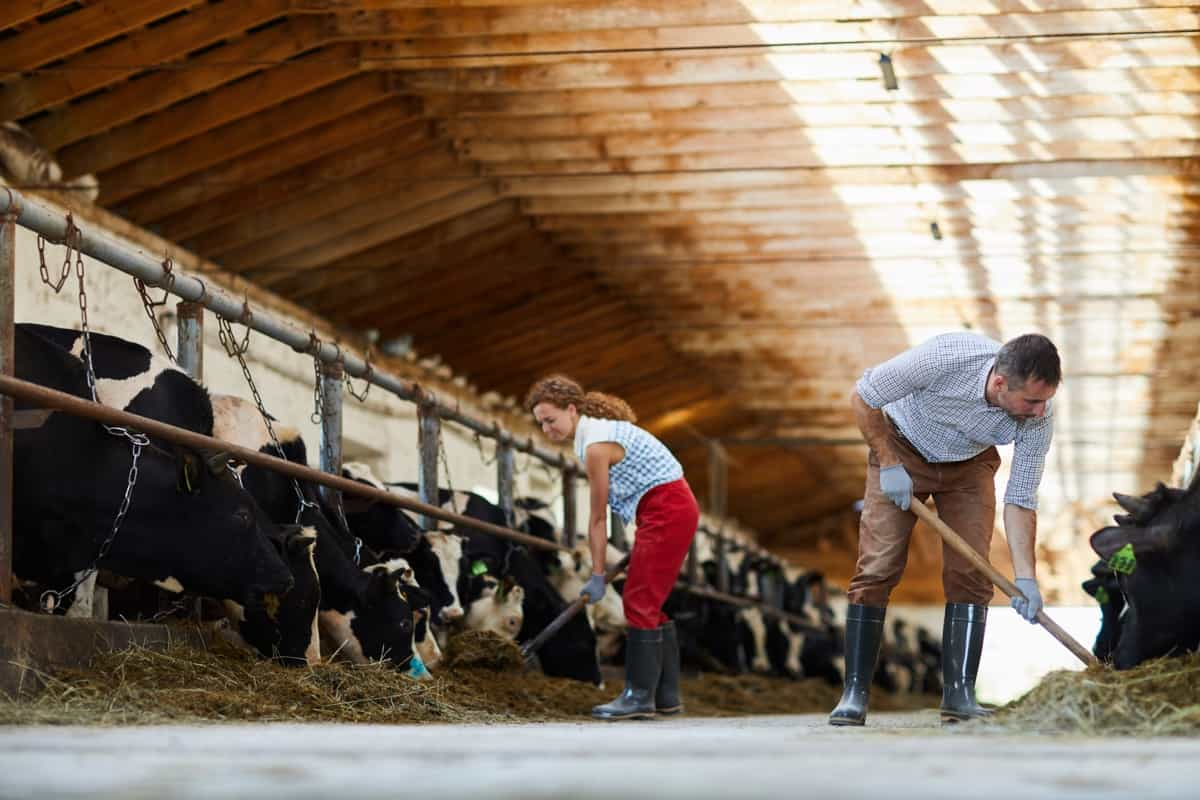
Guide to Dairy Farming Setup in India
Understanding the Indian Dairy Farming Landscape
India is the largest milk producer, with millions of small-scale dairy farmers contributing significantly to this sector. The landscape varies from traditional methods in rural areas to modern commercial setups in urban regions. In India, dairy farming plays a crucial role in providing livelihoods for many people and meeting the growing milk demand and dairy products. Additionally, factors such as climate variations, feed availability, market dynamics, and government policies all influence how dairy farming operates in different parts of India.
Best Breeds for Indian Dairy Farms
The climate and conditions in India make certain breeds more suitable for dairy farming than others. The popular choice for Indian dairy farms is the Holstein Friesian breed, known for its high milk production capabilities. They thrive well in various climates and are known for their adaptability. Another excellent breed for Indian dairy farms is the Jersey cow, famous for its high butterfat content in milk.
Jerseys are efficient grazers and do well in smaller land holdings, which are common in India. The indigenous Gir breed is also highly valued by Indian farmers due to its ability to withstand hot temperatures and produce A2-type milk, which has gained popularity among consumers. Other breeds include Sahiwal, Gir, Rathi, Tharparkar, Red Sindhi, Guernsey, Ayrshire, and Normande. Selecting the best breeds depends on factors like climate, feed availability, and desired milk quality, so choose wisely when starting your dairy farm venture.
Legal and Regulatory Framework for Dairy Farming in India
The Indian government has specific rules and regulations that govern the dairy industry to ensure animal welfare, food safety, and environmental sustainability. Farmers must comply with laws related to animal husbandry practices, milk production standards, and waste management protocols. This includes obtaining necessary licenses and permits from local authorities to operate a dairy farm legally.
Additionally, guidelines on the use of veterinary medicines, feed additives, and other inputs prevent the misuse or contamination of dairy products. Adhering to these regulations ensures quality control and builds trust among consumers. Establishing a successful dairy farm in India requires careful planning, leveraging technology and innovation, accessing financial support through government subsidies, and adhering to legal and regulatory frameworks.
Designing and Setting Up a Dairy Farm Infrastructure
It involves planning and creating suitable facilities to ensure the well-being of your cattle and optimize production. When designing the infrastructure, factors such as location, layout, ventilation, lighting, and drainage must be carefully considered. The goal is to create a comfortable environment that promotes healthy growth and productivity in your herd.
In case you missed it: Why You Should Consider These 20 Best Dairy Cattle Breeds for Your Farm: Top Profitable Milk Cow Breeds
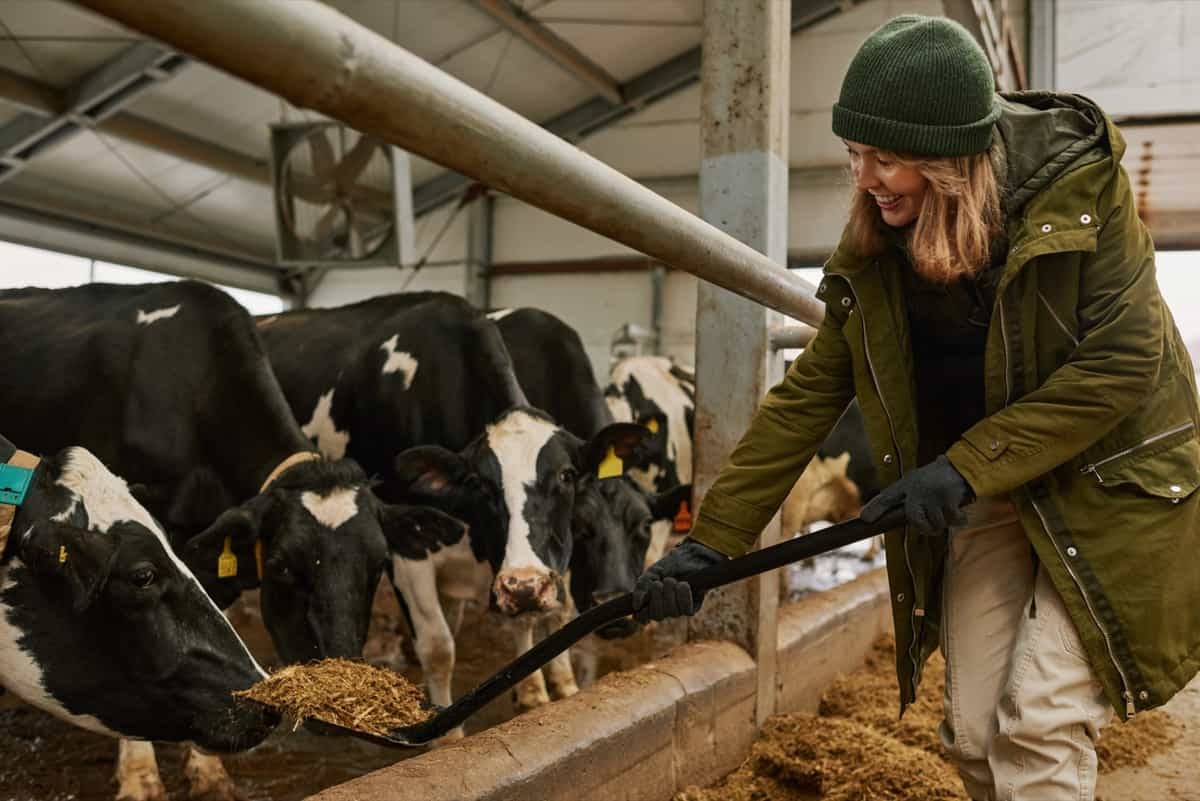
Setting up proper fencing is essential to secure grazing areas and prevent animals from wandering off. Adequate shelter is provided to protect the cattle from rain or extreme heat. Investing in quality equipment such as milking machines, feeders, water troughs, and storage facilities will streamline operations on your dairy farm. Regular maintenance of tools is necessary to ensure efficiency and longevity.
Nutritional Management for Dairy Cattle
A well-balanced diet ensures that the cows or buffaloes receive all the necessary nutrients to produce high-quality milk. It is essential to provide a mix of roughages, concentrates, minerals, and vitamins in their feed. Grasses, legumes, and silage are common roughages that can be fed to dairy cattle. These sources provide fiber for proper digestion and energy for milk production. Concentrates such as grains or commercial feed help meet their protein and energy requirements.
Minerals like calcium, phosphorus, magnesium, and potassium play a major role in maintaining overall health. Additionally, vitamins like A, D, E, and B-complex are essential for various bodily functions. Contact with a veterinarian or nutritionist can help tailor a feeding program based on individual needs.
Water Management Practices in Dairy Farming
Adequate water supply is essential for hydration, digestion, and milk production. Implementing efficient water management practices can lead to cost savings and improved farm sustainability. The key aspect of water management is providing clean and fresh drinking water at all times. Proper drainage must be in place to avoid stagnant water, which can attract pests and spread diseases among the herd. Regular maintenance of watering equipment such as troughs or automatic drinkers is also important to prevent leaks or malfunctions.
Rainwater harvesting can be a sustainable solution for supplementing water supply on the farm during dry seasons. Installing storage tanks or ponds can help capture rainwater runoff for later use, reducing reliance on external sources. Implementing effective water management practices not only benefits the cattle but also contributes to the overall efficiency and success of a dairy farming operation.
Reproductive Health and Breeding Strategies
Reproductive health management involves monitoring the estrous cycle, ensuring proper nutrition, and timely vaccinations for your cattle. By maintaining optimal reproductive health, you can increase the chances of successful breeding and high-quality offspring. Breeding strategies play a vital role in improving the genetic potential of your herd. Selecting superior breeds with desirable traits such as high milk production, disease resistance, and adaptability to local conditions is essential.
In case you missed it: Maximizing Milk Production: Dairy Cow Nutrition on Different Lactation Cycles
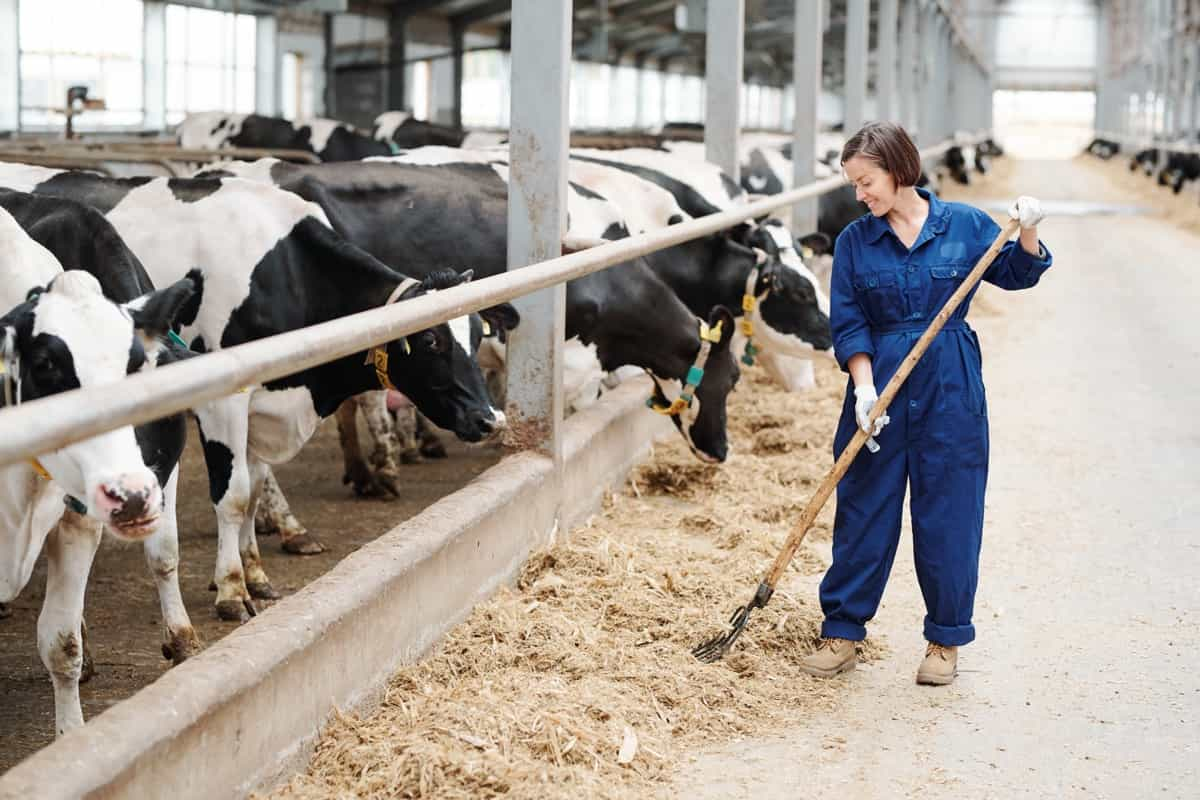
Implementing techniques like artificial insemination can help you achieve specific breeding goals and enhance the overall productivity of your dairy farm. Regularly evaluating the performance of your breeding programs and making adjustments when necessary is key to sustainable growth in dairy farming.
Milking Techniques and Equipment
Proper milking practices ensure the health of the cows and the milk quality produced. Milking machines have revolutionized the dairy business by streamlining the milking process and increasing productivity. These machines are designed to mimic hand-milking motions while being faster and more hygienic.
Before milking, the udders must be thoroughly cleaned to prevent contamination. Sanitizing solutions help maintain a sterile environment during milking. Proper training for farm workers on how to operate milking equipment is crucial for smooth operations. Regular maintenance and cleaning of the equipment also play a significant role in ensuring its effectiveness.
Dairy Farm Hygiene and Animal Health Management
Maintaining proper hygiene and ensuring the dairy animal’s health is crucial for the success of any dairy farm. Regular cleaning of barns, milking areas, and equipment helps prevent diseases and infections among the cattle. Implementing a strict vaccination schedule and regular health check-ups by qualified veterinarians can help in the early detection of any potential health issues. Proper nutrition tailored to meet the specific needs of each animal plays a key role in their overall well-being.
Regular grooming and hoof trimming are essential to prevent lameness and other foot-related problems. Adequate ventilation in barns reduces moisture levels, preventing respiratory issues among the livestock. Strict biosecurity measures must be obtained to prevent external contaminations from entering the farm premises. By prioritizing hygiene and animal health management, dairy farmers can ensure high-quality milk production while promoting the welfare of their animals.
Managing Waste and Sustainability Practices in Dairy Farming
Waste management involves proper disposal of manure, which can be turned into organic fertilizer through composting processes. This not only reduces environmental pollution but also provides a cost-effective solution for fertilizing crops. Implementing sustainability practices such as water conservation techniques, energy-efficient equipment, and renewable energy sources helps reduce carbon footprint and operating costs.
Utilizing solar panels to power farm operations or installing rainwater harvesting systems are smart investments that benefit both the environment and the bottom line. Additionally, practicing rotational grazing helps improve soil health, reduce erosion, and enhance biodiversity on dairy farms. By allowing pastures to rest between grazing periods, farmers can maintain sustainable land use practices while providing nutritious forage for their cattle.
In case you missed it: Sustainable and Eco-friendly Strategies for Tick Control in Dairy Farming
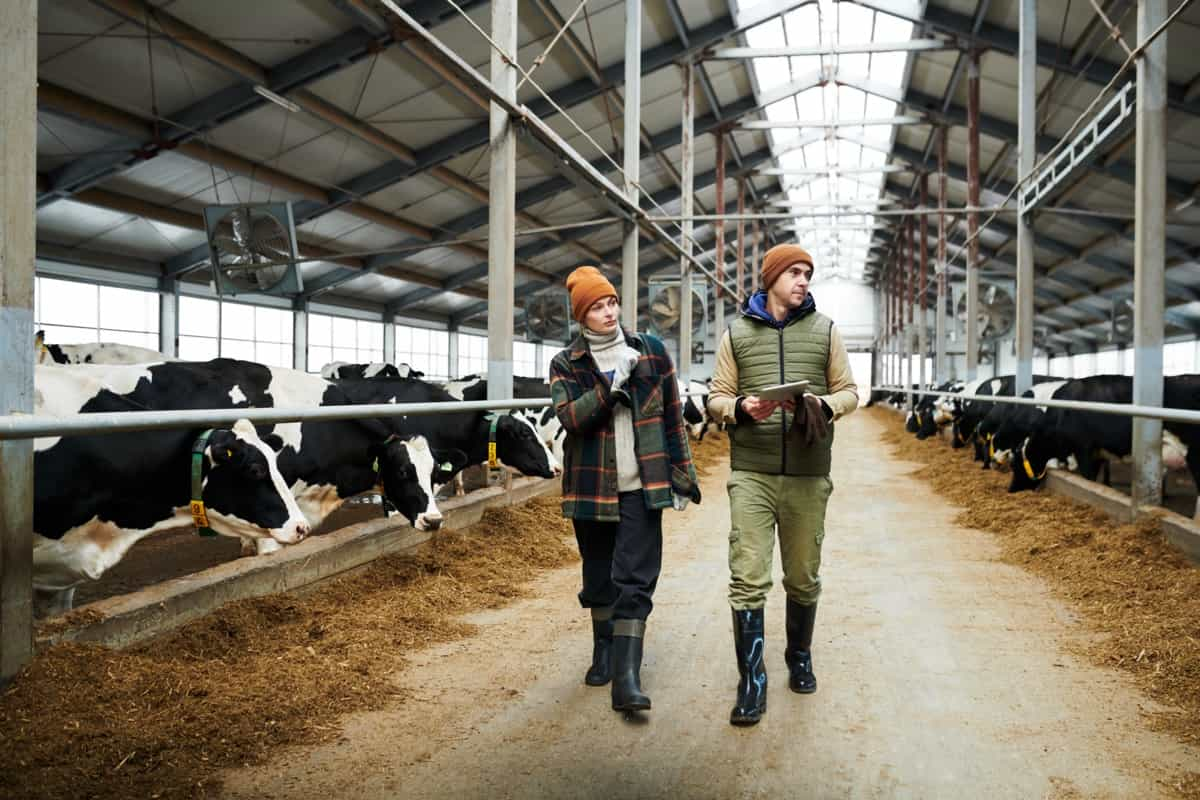
Dairy Product Processing and Value Addition
By adding value to raw milk, farmers can create various products such as ghee, butter, cheese, yogurt, and ice cream that have higher market demand and better profit margins. Value addition not only increases the shelf life of dairy products but also allows farmers to cater to different consumer preferences.
Processing techniques like pasteurization, homogenization, and packaging are essential steps in ensuring quality and safety standards are met. Furthermore, investing in modern processing equipment and technology can help streamline operations and improve efficiency. This includes machinery for churning butter, packaging equipment for yogurt cups, or cheese-making vats.
Marketing Strategies for Dairy Products in India
It’s essential to understand the diverse consumer preferences and market dynamics. Leveraging digital platforms like social media can help reach a wider audience and boost sales. Collaborating with local grocery stores, supermarkets, and restaurants can also increase the visibility and accessibility of your dairy products. Creating engaging packaging designs that resonate with Indian consumers’ tastes and preferences can make your products stand out on the shelves.
Offering promotions, discounts, or bundle deals can attract price-conscious customers while maintaining product quality is crucial for building trust and loyalty among consumers. Participating in food fairs, exhibitions, or agricultural shows can provide opportunities to showcase your dairy products to potential customers and network with industry partners. Building a brand reputation based on quality, authenticity, and sustainability can differentiate your dairy products in a competitive market landscape.
Financial Planning and Government Subsidies for Dairy Farms
Government subsidies can be a significant source of financial support for dairy farmers. Various schemes are available at both the central and state levels to encourage and assist individuals in the dairy farming sector. These subsidies can help offset initial investment costs, improve infrastructure, provide access to better technology, and enhance overall productivity.
In case you missed it: How to Start Dairy Farming in Odisha: Business Plan, Breeds, Setup Cost, Profit, and Requirements
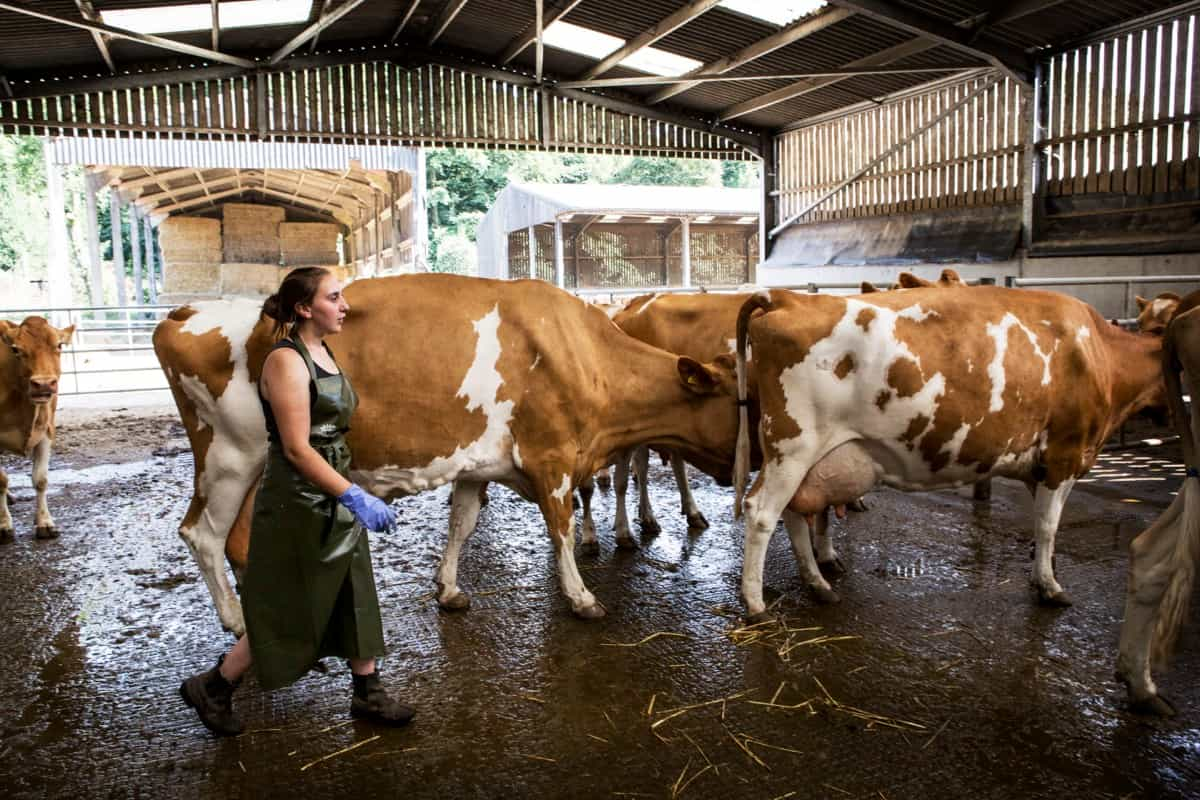
Proper utilization of government subsidies, coupled with effective financial planning, can substantially improve the success of a dairy farm venture. Farmers can optimize their resources and maximize profitability while contributing positively to India’s growing dairy industry. Calculating the initial investment required for infrastructure, cattle purchase, and operational costs is essential.
It’s important to create a detailed business plan outlining expenses and revenue projections. To access government subsidies, farmers must meet specific eligibility criteria and follow application procedures diligently. Understanding the subsidy programs available and staying updated on any new initiatives is key to maximizing benefits for your dairy farm business.
Cost to Set Up a Dairy Farm in India
Setting up a dairy farm in India involves significant initial costs. On average, starting a dairy farm business can range from 10 to 20 lakhs. This investment covers various aspects such as acquiring land, building infrastructure like sheds and milking parlors, purchasing cattle, feed supplies, and equipment like milking machines and refrigeration units. The cost breakdown includes expenses for veterinary care, breeding programs, labor wages, and transportation. Additionally, setting aside funds for marketing strategies is essential to promote your dairy products effectively in the competitive market.
Average Profits in Dairy Farming Business in India
Running a well-managed dairy farm in India can be a lucrative business with the potential to generate substantial profits. With a moderate-sized herd of around 50 cows or buffaloes, farmers can expect to see monthly profits ranging from Rs. 50,000 to Rs. 5 lakhs. Various factors contribute to the profitability of a dairy farm, including efficient management practices, high-quality feed, and healthcare for the cattle, as well as effective marketing strategies for dairy products. By focusing on optimizing these aspects of the business, farmers can maximize their profitability and ensure long-term success.
Technology and Innovation in Dairy Farming
As technology continues to advance, the dairy farming industry is also evolving. Farmers are increasingly adopting innovative technologies to enhance efficiency, productivity, and sustainability on their farms. From automated milking systems to IoT-enabled monitoring devices for animal health, technology is revolutionizing the way dairy farms operate.
In case you missed it: Dairy Entrepreneurship Development Scheme in India: DEDS Benefits, Eligibility, and How to Apply
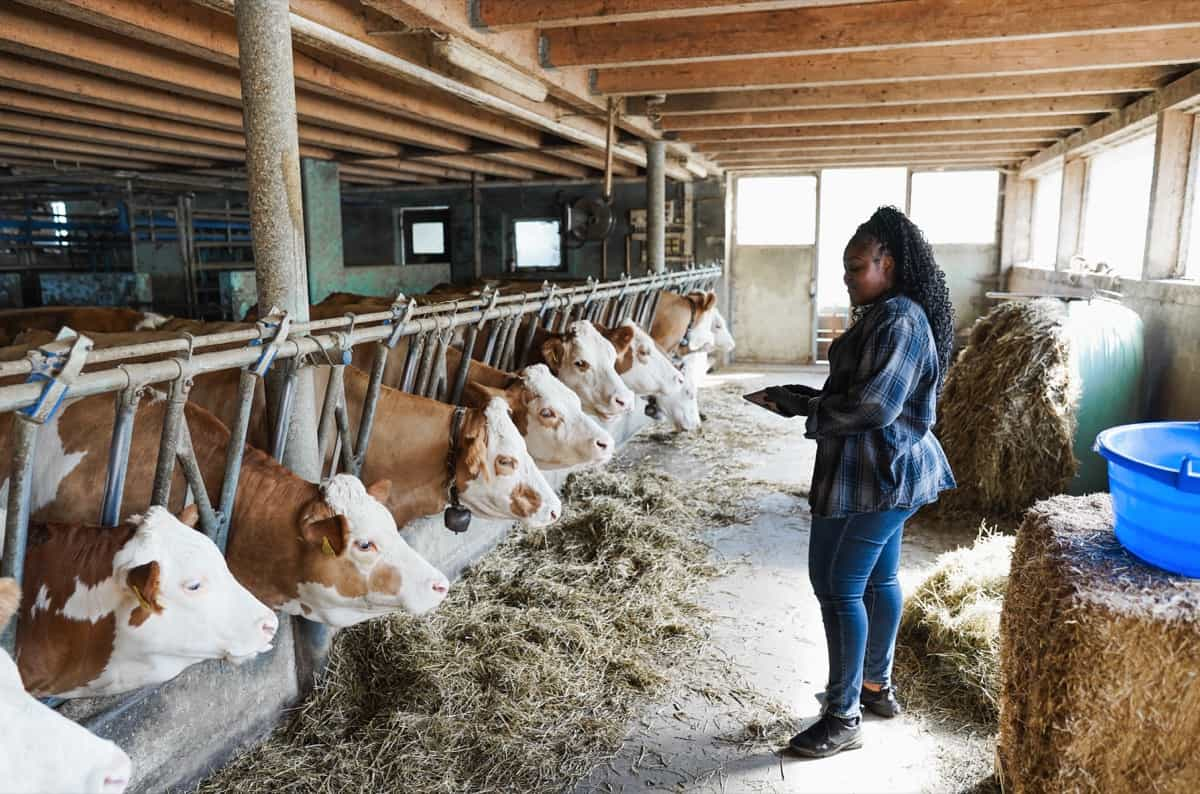
There is a growing trend in using drones for farm management, implementing cloud-based data analytics for decision-making, and even exploring artificial intelligence applications for cattle breeding programs in India. Precision dairy farming tools such as activity monitors help track cow behavior and health, allowing for proactive care. Moreover, robotic milking machines streamline the milking process, reducing labor costs and ensuring consistent milk quality.
Innovative solutions like biogas plants enable farms to convert waste into energy, promoting sustainability. Indian farmers can stay competitive in the market while ensuring sustainable growth for the future. With continuous research and development in this field, the possibilities are endless for those willing to adapt and integrate modern solutions into their traditional farming methods.
Conclusion
The dairy farming business in India plays a crucial role in meeting the demand for nutritious dairy products worldwide while providing livelihood opportunities for farmers across different regions. In this industry, farmers focus on breeding healthy cows with high milk-producing potential. They provide proper nutrition, housing, and medical care to ensure the well-being of their livestock.
- How to Make Houseplants Bushy: Effective Tips and Ideas
- Innovative Strategies for Boosting Coconut Pollination and Yield
- Pollination Strategies for Maximum Pumpkin Yield
- The Complete Guide to Chicken Fattening: Strategies for Maximum Growth
- Natural Solutions for Tulip Problems: 100% Effective Remedies for Leaf and Bulb-Related Issues
- Revolutionizing Citrus Preservation: Towards a Healthier, Greener Future
- Natural Solutions for Peony Leaf and Flower Problems: 100% Effective Remedies
- Maximizing Profits with Avocado Contract Farming in India: A Comprehensive Guide
- Natural Solutions for Hydrangea Problems: 100% Effective Remedies for Leaf and Flowers
- The Ultimate Guide to Choosing the Perfect Foliage Friend: Bringing Life Indoors
- From Sunlight to Sustainability: 15 Ways to Use Solar Technology in Agriculture
- The Ultimate Guide to Dong Tao Chicken: Exploring from History to Raising
- The Eco-Friendly Makeover: How to Convert Your Unused Swimming Pool into a Fish Pond
- Mastering the Art of Delaware Chicken Farming: Essentials for Healthy Backyard Flocks
- 20 Best Homemade Fertilizers for Money Plant: DIY Recipes and Application Methods
- How to Craft a Comprehensive Free-Range Chicken Farming Business Plan
- Brighten Your Flock: Raising Easter Egger Chickens for Beauty and Bounty
- How to Optimize Your Poultry Egg Farm Business Plan with These Strategies
- Subsidy for Spirulina Cultivation: How Indian Government Schemes Encouraging Spirulina Farmers
- Ultimate Guide to Raising Dominique Chickens: Breeding, Feeding, Egg-Production, and Care
- Mastering the Art of Raising Jersey Giant Chickens: Care, Feeding, and More
- Ultimate Guide to Raising Legbar Chickens: Breeding, Farming Practices, Diet, Egg-Production
- How to Raise Welsummer Chickens: A Comprehensive Guide for Beginners
- How to Protect Indoor Plants in Winter: A Comprehensive Guide
- Ultimate Guide to Grow Bag Gardening: Tips, Tricks, and Planting Ideas for Urban Gardeners
- Guide to Lotus Cultivation: How to Propagate, Plant, Grow, Care, Cost, and Profit
- Agriculture Drone Subsidy Scheme: Government Kisan Subsidy, License, and How to Apply Online
- Ultimate Guide to Raising Araucana Chickens: Breed Profile, Farming Economics, Diet, and Care
- Bringing Hydroponics to Classroom: Importance, Benefits of Learning for School Students
- Ultimate Guide to Raising Polish Chickens: Breed Profile, Farming Economics, Diet, and Care
- Ultimate Guide to Raising Australorp Chickens: Profile, Farming Economics, Egg Production, Diet, and Care
- Silkie Chicken Farming: Raising Practices, Varieties, Egg Production, Diet, and Care
- Sussex Chicken Farming: Raising Practices, Varieties, Egg Production, Diet and Care
- Homemade Feed Formulations for Livestock: Discover Cost-effective Starter to Finisher Feed Recipes
- 20 Best Pig Weight Gain Supplements: Top Swine Weight Gain Formulas
- Ultimate Guide to Elderberry Farming: Propagation, Planting, Yield, Cost, and Profit
Hi agri farming!!!
Can you share the details how the water management can be done for hf cow farming.
We will update soon with HF Cow Farming Project Report.
Sir, I am preparing for open a dairy farm of 10 jersey cow. Please inform me the jersey cow feeding chart and breeding time and calf feeding habit after 26 the week of birth.
We will update separate article for Jersy Cow Farming. However, you can go through this to get some idea.
Read: Dairy Farming FAQ.
Dear sir,
I am Srinivas from Andhra parodies I need to start dairy farm I need guidelines for this where I need to contact for information about the dairy farming scheme subsidies and Loans.
Good Information. Thank you.
Dear sir,
I am danish from Kanpur Uttarpradesh. I need to start a buffalo dairy farm I need guideline for this where I need to contact for information about dairy farming scheme subsidy and loan process. Please ping me a message on about this on my number
Regards
Danish
You can check this: How To Get NABARD Subsidy For Dairy Farming.
Hello Agrifarming,
Thank you for the information it is so useful.
Appreciate you share us the project report for dairy farming with 4 to buffalo or cow.
Thank You,
Mahesh Patil
Check this to get an idea: Dairy Cow Farming Project Report with 10 Animals/strong>.
Wonderful information has been shared via this Blog, for Dairy Farming set up guide for beginners. It is truly an honor to be included in this excellent resource you’ve put together. Thanks for sharing this informative article!
Happy to read your information on dairy farming. I am also intrested to start a dairy farming . So I want to meet your representetiv to know all about your spport for me. I also want to take a training session if you provides.
Warm Regards
I am really grateful for the info. Am planning for a dairy farm with 10 cows. Kindly guide me the details in my mail. Pl. let me know what is the source of purchasing a jersey, Holstein cow? I want to start the dairy farm in Orissa.
Regards
Sanjaya
Check this: Cow Farm Project Report.
Hi Sir,
i want to do a social venture in Assam by helping the rural widows to set up milk farming
i have selected a village in hilly area close to guwahati and identified 20 houses to be helped
pls guide me how to make a report and help this familes become financial independent with minimum contribution from me n take govt grants to set up milk business with 1 or 2 animals per house
Dear Sir,
we start the new business for daily farming but when we went to bank for loan they have to ready to get them for loan they said that the subsidy is not available for that business. is it right sir
Sir ,Goodmorning ,
I have a land and 10 cows available currently ,I am interested to set up new Farm near future . Kindly do the needful to set up .
Regards
HG.Zaheer